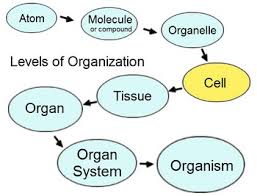Thermotolerance and longevity (2)
See also: Thermotolerance and Longevity
This article is part of the Research Topic Brain nutrient sensing in the control of energy balance: new insights and perspectives
Excerpt:
It is well established that nutrients act as signaling molecules in synergy with nervous and hormonal signals to inform the brain about the nutritional status of the body. The integration of these signals within the hypothalamus and other brain regions triggers behavioral and physiological responses through efferent autonomic nerves, hypothalamic-pituitary-Adrenal and thyroid axis in order to maintain energy homeostasis. In particular, the roles of glucose, fatty acid and amino acid sensing in the control of food intake and peripheral glucose metabolism have been extensively studied. Cellular and molecular mechanisms by which circulating nutrients act on the brain have become a highly competitive field with outcomes leading to several strategies to prevent or treat obesity and its co-morbidities.
In the past decade the field of brain nutrient-sensing has seen a profound evolution with, for instance, the predominant role for an interplay between homeostatic and non-homeostatic control of food intake and energy balance. The latter takes place in the mesolimbic system and recapitulates the rewarding and motivational aspects of feeding. In addition, other brain regions known for their role in memory (hippocampus), olfaction (olfactory bulbs) and circadian clock (suprachiasmatic nucleus) have emerged as nutrient sensitive areas contributing to feeding behavior and energy homeostasis. Finally, growing evidence suggests that the interplay between glial cells and neurons is fundamental in nutrient sensing.
In parallel to these new developments, several novel methodologies have emerged to dissect the neurocircuitries regulating feeding behavior and energy homeostasis, including optogenetics, DREAD, cell specific deletion… Together, these approaches will help to better understand the interplay between brain regions and circuits involved in nutrient sensing.
This Frontiers Research Topic aims to focus on new insights and perspectives in brain nutrient sensing (both in physiological and pathophysiological conditions) with a special attention to the multi-scale deciphering of cell inner mechanisms. In this regard contributors are encouraged to submit reviews, mini-reviews, commentaries, perspective articles, original research articles and method articles.
My invited review of nutritional epigenetics and microRNA-mediated cell type differentiation was returned without review by the journal editors at “Nutrients.”
See: Nutrient-dependent pheromone-controlled ecological adaptations: from atoms to ecosystems
See also: Mitochondrial Ultrastructure and Glucose Signaling Pathways Attributed to the Kv1.3 Ion Channel
Thanks to Nerissa Belcher for calling this to my attention. I have followed the works of Debra Fadool for several years, but might have missed this one.
For other examples of her progress, see:
Mammalian Pheromones (2005)
See also: Olfaction Under Metabolic Influences (2012)
See also: Hyperlipidemic Diet Causes Loss of Olfactory Sensory Neurons, Reduces Olfactory Discrimination, and Disrupts Odor-Reversal Learning (2014)
See for comparison:
Periodic Scarred States in Open Quantum Dots as Evidence of Quantum Darwinism (2010)
Reported as: New Signs of Stress Damage to the Brain: Mouse Study
Excerpt:
Nasca and her colleagues’ experiments included mice at high risk of developing anxiety- and depression-like behaviors in response to stress. Treatment with acetyl carnitine also appeared to protect these mice, suggesting that a similar preventative approach might work for depression-prone people.
Both humans and rodents naturally produce acetyl carnitine under normal conditions and several depression-prone animal models are deficient in acetyl carnitine. In a separate study, Nasca and colleagues are examining whether people with depression have abnormally low levels of the molecule.
The links from everything know to serious scientists about biophysically constrained RNA-mediated cell type differentiation can be compared to outcomes linked to healthy longevity or from virus-driven energy theft to mutations and all pathology via carnitine metabolism.
The journal article cites: Magarinos AM, McEwen BS. Stress-induced atrophy of apical dendrites of hippocampal CA3c neurons: involvement of glucocorticoid secretion and excitatory amino acid receptors. Neuroscience 1995; 69:89–98.
It does not link virus-driven energy theft to experience-dependent changes in RNA-methylation that have already been linked from RNA-directed DNA methylation to learning and memory during life history transitions by this group, and in the context of this report: Oppositional COMT Val158Met effects on resting state functional connectivity in adolescents and adults.
The likelihood that no one else has linked virus-driven energy theft to experience-dependent changes in RNA-methylation, which that have already been linked from RNA-directed DNA methylation to learning and memory during life history transitions, suggests that others have not followed the best advice I ever received. In the early 1990’s, I was told that my model could not be validated unless I could show that gene activation occurred in hormone-secreting neurons of the hypothalamus that all serious scientist know link energy-dependent RNA-mediated cell type differentiation to all biodiversity and also link virus-driven energy theft from mutations to all pathology via the physiology of reproduction in all living genera.
I did that, and co-authored a book, and have since published a series of articles with co-authors or as monographs. Most people remain uninterested and many are antagonistic because they don’t like the experimental evidence of biologically-based cause and effect that I included in my model. They prefer ridiculous theories.


